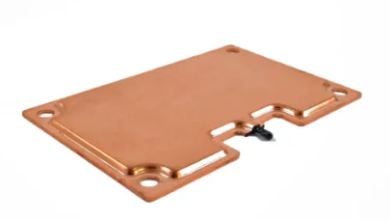Ultimate Guide to Understanding Robotic Welding Systems

In today’s rapidly changing manufacturing world, automation is helping companies work faster, more accurately, and on a larger scale. One of the most significant innovations is robotic welding, which has revolutionized the welding process. Robotic welding systems use programmable robot arms to perform precise, fast, and consistent welding, especially for repetitive or high-accuracy tasks.
This guide covers the main parts and types of robotic welding systems, compares them to manual welding, highlights their benefits, and offers tips for choosing the right system. It helps both beginners and experienced users make informed decisions to get the best results.
What Are Robotic Welding Systems?
Robotic welding systems are machines that use programmable robot arms to weld parts quickly and accurately. They are widely used in modern manufacturing, especially where large quantities of high-quality products are needed. These systems automate the welding process with robots equipped with welding torches, which can move parts and ensure every weld is precise and consistent. Depending on the task, they can perform different types of welding, such as MIG, TIG, or laser welding.
Main Components of Robotic Welding Systems
Robotic welding systems use several key components to automate welding with precision and efficiency:
Robotic Manipulator (Arm):
A flexible six-axis arm that holds the welding torch, reaches difficult angles, and follows complex weld paths accurately.
Welding Power Supply:
Provides stable electrical energy, controlling voltage and current for strong, high-quality welds.
Wire Feeder:
A wire feeder controls the flow of filler material, ensuring welds stay consistent in size and shape.
Sensors and Vision Systems:
Monitor the welding process in real time, detecting variations and automatically adjusting for optimal results.
Central Controller:
Coordinates all components, interpreting commands to ensure correct movements, welding, and adjustments.
Efficiency and Precision
- Robots can work continuously without fatigue, increasing output.
- Programmed control of speed, arc length, and heat ensures highly precise welds.
- Seam-tracking sensors maintain consistent weld quality, even on variations in the workpiece.
- Robots can access hard-to-reach areas while keeping the ideal torch angle to prevent defects.
Robotic welding systems use smart sensors and precise robot arms to make welding faster, safer, and more accurate. They reduce errors, ensure consistent quality, handle complex designs, and boost productivity across industries like automotive, aerospace, shipbuilding, and heavy machinery manufacturing.
See also: How Financial Firms Are Leveraging Technology for Growth
Types of Robotic Welding
Robotic welding systems employ various methods, each tailored to specific materials and production needs:
MIG Welding:
MIG welding is a fast and flexible method that is easy to automate. It works best on thin to medium-thick metals and is commonly used in automotive manufacturing or industrial work.
TIG Welding:
TIG welding produces precise, clean welds with minimal spatter, ideal for thin metals and high-precision parts. It is commonly used in aerospace, medical devices, and other industries that need high precision.
Laser Welding:
Laser welding utilizes a concentrated laser beam to deliver fast, highly precise welds with minimal heat affecting nearby material. This method is commonly used in the automotive, electronics, and medical industries, where both speed and accuracy are essential.
Arc Welding:
Arc welding uses an electric arc to join thick materials. It offers high deposition rates and simple equipment, making it ideal for construction, shipbuilding, and heavy machinery manufacturing.
Plasma Welding:
A specialized form of TIG welding, plasma welding utilizes a focused plasma arc to produce deep, narrow welds with minimal heat impact. It is particularly suited for thin or intricate components requiring detailed work.
Different robotic welding methods are suited for different types of work. MIG for speed, TIG for precision, and laser, arc, or plasma for specialized tasks, chosen based on material and production requirements.
How Robotic Welding Compares to Manual Welding
Accuracy & Precision
Manual welding: Even the best welders can have ups and downs. Fatigue, shaky hands, or changing conditions like heat and vibration can affect the quality of their work.
Robotic welding: Robots are extremely accurate and repeatable, often holding tolerances of ±0.1 mm, making every weld nearly identical.
Productivity & Efficiency
Manual welding: Humans need breaks and slow down due to fatigue.
Robotic welding: Robots can weld 80–90% of the time nonstop, compared to much less for humans.
Consistency of Quality
Manual welding: Quality can drop over time due to fatigue. Mistakes (misalignment, uneven heat, porosity) are more likely, leading to rework.
Robotic welding: Consistent, clean welds with fewer defects. Controlled heat input reduces warping or distortion, even on thin or complex parts.
Safety
Manual welding: Welders face constant risks like burns, sparks, fumes, and eye damage from UV light. Fatigue also increases accident chances.
Robotic welding: Robots take on the dangerous work. Welding cells can be enclosed with guards and ventilation, making workplaces safer and reducing health issues.
Benefits of Robotic Welding Systems
Robotic welding systems significantly enhance manufacturing by:
Increasing Productivity:
Robots can work longer hours and at faster speeds than humans, often replacing several welders. This boosts production output and lowers operational costs.
Ensuring Consistent Quality:
Robots provide high accuracy and repeatable welds, reducing defects. Real-time monitoring ensures every weld meets quality standards.
Reducing Waste:
Precise control over welding materials minimizes spatter, over-welding, and rework, saving both materials and labor.
Improving Safety:
By handling hazardous welding tasks, robots reduce the risk of injuries and exposure to fumes for human workers.
Robotic welding enhances efficiency, accuracy, and cost savings, making it a smart investment for quality production.
Industry Applications
Robotic welding systems are transforming manufacturing by making it more accurate, efficient, and scalable. Here’s how different industries use them:
Automotive & Aerospace
In car factories, robots weld car bodies, frames, and parts with high speed and precision, ensuring consistent quality. In aerospace, they handle strong, lightweight components, improving durability and reducing downtime.
Shipbuilding & Heavy Machinery
Robotic welding joins large ship sections, such as hulls and decks, boosting production and reducing labor costs. In heavy machinery, robots produce strong, high-quality parts for cranes, bulldozers, and excavators.
Construction & Metal Fabrication
Robotic welding efficiently joins beams, frames, and other structural components. Automation speeds up construction, improves safety, and ensures uniform weld quality for modern infrastructure projects.
Small and Medium Enterprises (SMEs)
Smaller companies are adopting robotic welding to compete with larger manufacturers. As technology improves and costs drop, SMEs can produce higher-quality products, reduce labor costs, and scale production efficiently.
Robotic welding speeds up production, improves quality, and supports growth.
Choosing the Right Robotic Welding System
Production Volume & Variety:
High-volume production benefits most from robots, while flexible systems are best for diverse or custom parts.
Welding Type & Quality:
Select a system that suits your materials and the level of weld precision required.
Budget & ROI:
Consider upfront costs versus long-term savings in labor, materials, and defect reduction.
Space & Layout:
Ensure enough floor space and a workflow that allows smooth material handling.
Skills & Workforce:
Ensure your team is capable of operating and maintaining the robotic welding system, with support and training from the supplier.
Flexibility & Scalability:
Choose systems that can adapt to new products and scale with production growth.
Support & Reliability:
Consider the supplier’s reputation, as well as the availability of after-sales support, spare parts, and training.






